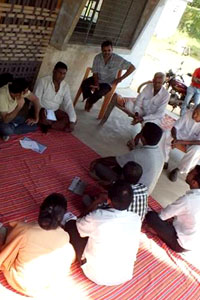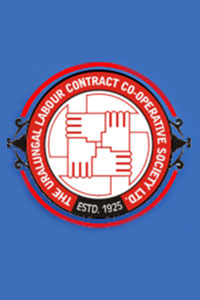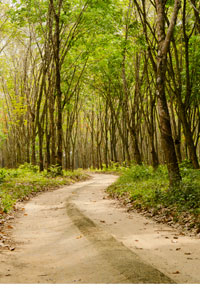|
Inspired by durable and sustainable transformation
Our models seek to transform livelihoods by promoting the development of two capabilities that we believe communities already have: self-reliance and evolution. While self-reliance is the ability of communities to create and manage their own enterprises, evolution is the ability to increase incomes in a sustainable manner with the right business design.
Not surprisingly then, our inspiration also springs from producer enterprises that have shown durability and sustainability in creating favourable outcomes, economic as well as social.
Here, we acknowledge world-renowned initiatives and individuals. They are a source of inspiration for millions – for their own producer members and for others like us, who seek to work with producer communities.
|
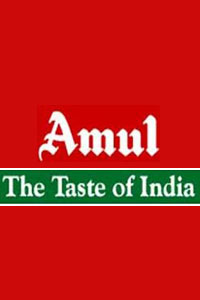
Amul, NDDB, Operation Flood & Dr. Verghese Kurien
The Amul-NDDB-Operation Flood story is one of remarkable transformation – of a milk importing nation emerging an exporter within just two decades, driven by the transformation of the livelihoods of millions and millions of dairy farmers.
It started with a handful of dairy farmers of Khera district in Gujarat who came together in 1946 to form a dairy cooperative. Leading them in this effort was Shri Tribhuvandas Patel, who also sought the assistance of an engineer named Verghese Kurien. The seeds of the movement were sown.
Seeing the initiative’s success, Lal Bahadur Shastri, the then Prime Minister of India, created the National Dairy Development Board (with Dr. Kurien as chairman) to replicate the Amul model, also known as the Anand pattern cooperative. Operation Flood followed, leading to India’s White Revolution.
Studies have calculated that an investment of Rs. 20 billion over 20 years increased India’s milk production from 20 MMT (million metric tonnes) to 60 MMT and generated incremental returns of Rs. 400 billion annually for the dairy farmers.
|
|
Gambhira Cooperative Farming Society
Gambhira is a 60-year-old farming co-operative near Anand that has delivered higher incomes for 291 member farmers who together cultivate 526 acres. Much of the land was in 1951 just wasteland distributed to starving farmers who started a cooperative.
Sales of crops have increased from Rs. 90,660 in 1953-54 to Rs. 3.26 crores in 2010-11. Income earned by each member was significantly higher than the income each earned as an individual cultivator. On an average, each member received about Rs. 90,000 (including bonus) in 2009-10.
The income generated from the society has helped members construct houses, upgrade their previous ones, and buy land outside the society. Children get an education (supported by the society, in some cases). At least one member of each family is employed with a government or private enterprise.
|
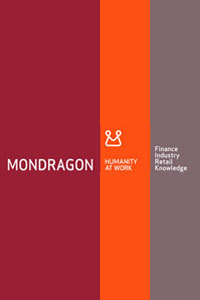
Mondragon
Mondragon in Spain is acknowledged globally as an embodiment of the co-operative movement. It started in 1956 with creation of an industrial cooperative and grew into a corporation and federation of worker cooperatives.
Today, Mondragon is in the top 10 companies of Spain. At the end of 2012, it employed 80,321 people in 289 companies and organizations in four areas of activity: Finance, Industry, Retail and Knowledge.
Mondragon cooperatives combine the core goals of a business organisation competing in international markets with the use of democratic methods in its business organisation, the creation of jobs, the human and professional development of its workers and a pledge to development with its social environment.
|
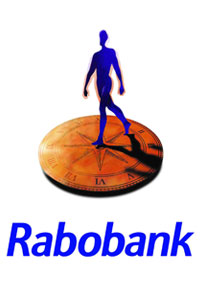
Rabobank
Rabobank is not a shareholder-driven company. It puts the interests and ambitions of its customers and members first. The strong points of Rabobank’s cooperative structure came to the fore in the recent global financial crisis, when Rabobank was able to operate without asking for state aid and kept its financial results on track.
Farmers united financially into Raiffeisen and Agricultural Co-operative Banks. The Local Member Rabobanks continue to be the collective owner of Rabobank to this day. Rabobank Nederland supports the Local Member Banks and oversees the subsidiaries and affiliated companies. With nearly two million members, Rabobank is one of the Netherlands’ largest cooperatives. The members not only benefit from banking and non-banking advantages, they also have the opportunity to join in the discussion and co-decide on the bank’s course.
Rabobank holds an 85%-90% market share in the agrarian sector in the Netherlands. Over time, the company started targeting small and mid-sized companies. By the mid-1970s, the market share in that sector had reached 30%. In 1987, the total outstanding loans in sectors other than agriculture exceeded those in the agricultural sector for the first time. Rabobank also holds some 40% of the total outstanding sums on Dutch savings accounts.
In the Netherlands, Rabobank is the third largest retail bank by market share, and second largest by number of current accounts at 30%.
|

Samakhya, CDF, Shri M. Rama Reddy and Late Mrs. Shashi Rajagopalan
Cooperative Development Foundation (CDF), popularly known as Sahavikasa, was formed in 1975, when a group of individuals came together and started working for the development of cooperatives. It was initially known as Samakhya.
CDF focuses on the state of Andhra Pradesh and seeks to promote and develop new-generation cooperatives under the legal framework of the Andhra Pradesh Mutually Aided Cooperative Societies Act of 1995.
In over 250 villages, 45,000 women and 31,000 men have been assisted to form themselves into a large number of thrift-based and agro-based cooperatives under the Act. 200 women thrift cooperatives and 160 men thrift cooperatives have been formed. In 2000, loans to the extent of Rs. 15 crores were given to members. Late Mrs. Shashi Rajagopalan, ALC India's mentor, was a multi-faceted professional, a leading activist in the cooperative movement, and a renowned consultant with special interest in micro-financial services based on frontline thrift groups. She was a member of Central Board of Directors of the Reserve Bank of India, member of the Board for Financial Services constituted by the Reserve Bank Board and also secretary of Cooperative Development Foundation (CDF) among numerous other responsibilities she held. It was through her association with CDF that the promoters of ALC India met Ms. Shashi, and with the largeness of spirit that she is known for she virtually adopted the fledgling organization. She provided training and vital inputs in areas like strategic planning, internal accounting, and external communication. She guided ALC India to set up important pillars of governance. Ms. Shashi helped us find people of eminence to guide us; she herself kept a close watch on ALC India’s initial growth.
|
|
Uralungal Labour Contract Co-operative Society, Kerala
The Uralungal Labour Contract Co-operative Society Ltd. (ULCCS Ltd.) is a construction society established in 1925 with just 14 members. The society is headquartered at Madappally in Vatakara Thaluk in Kozhikode District of Kerala. Today, the society is seen as one of the best working Labour Contract Co-operatives in India.
The main objective is employment generation for the poor. The Society started by taking up the public works of Malabar District Board.
More than 2000 workers, including 750 members and about 1749 non-members, are engaged daily.
|




